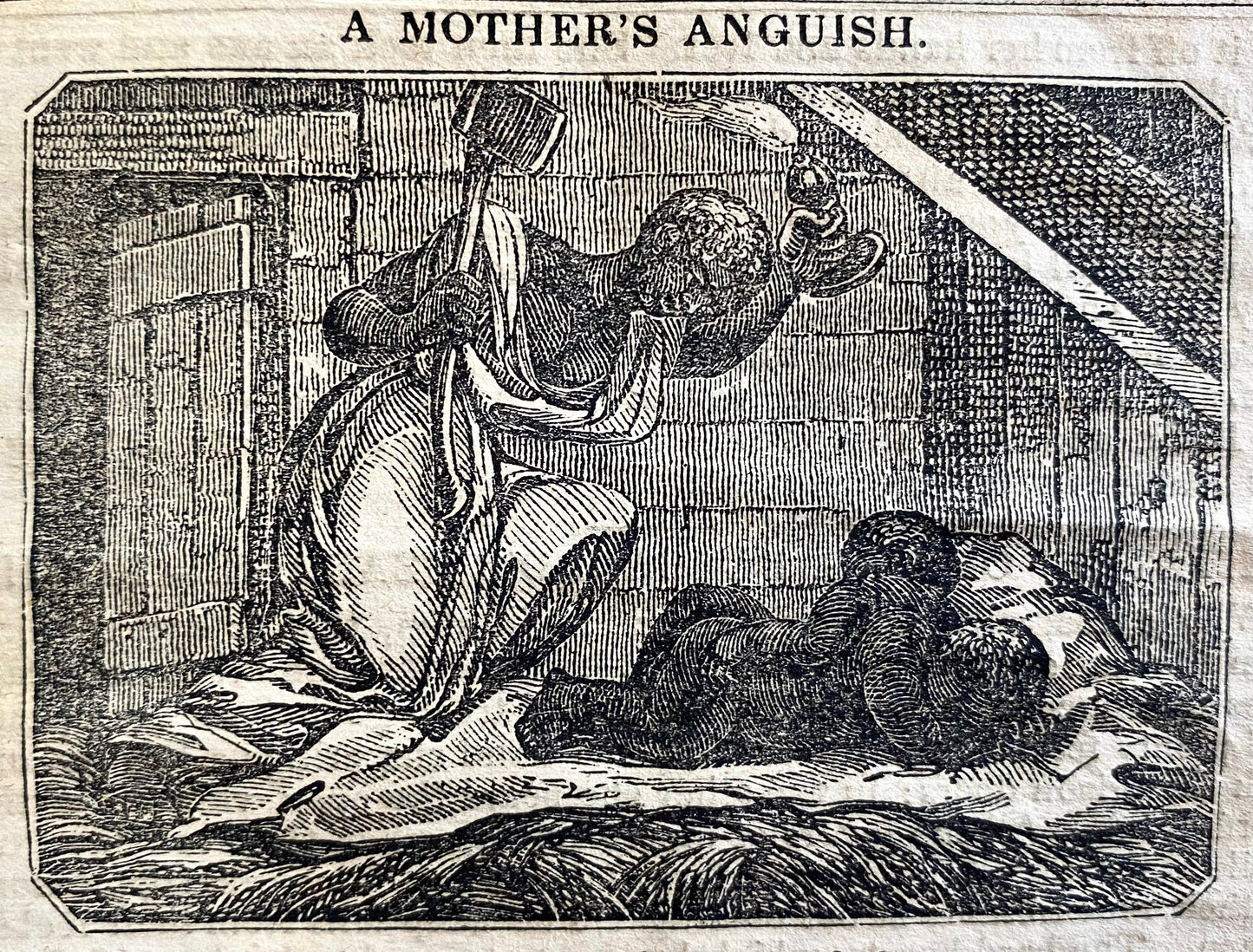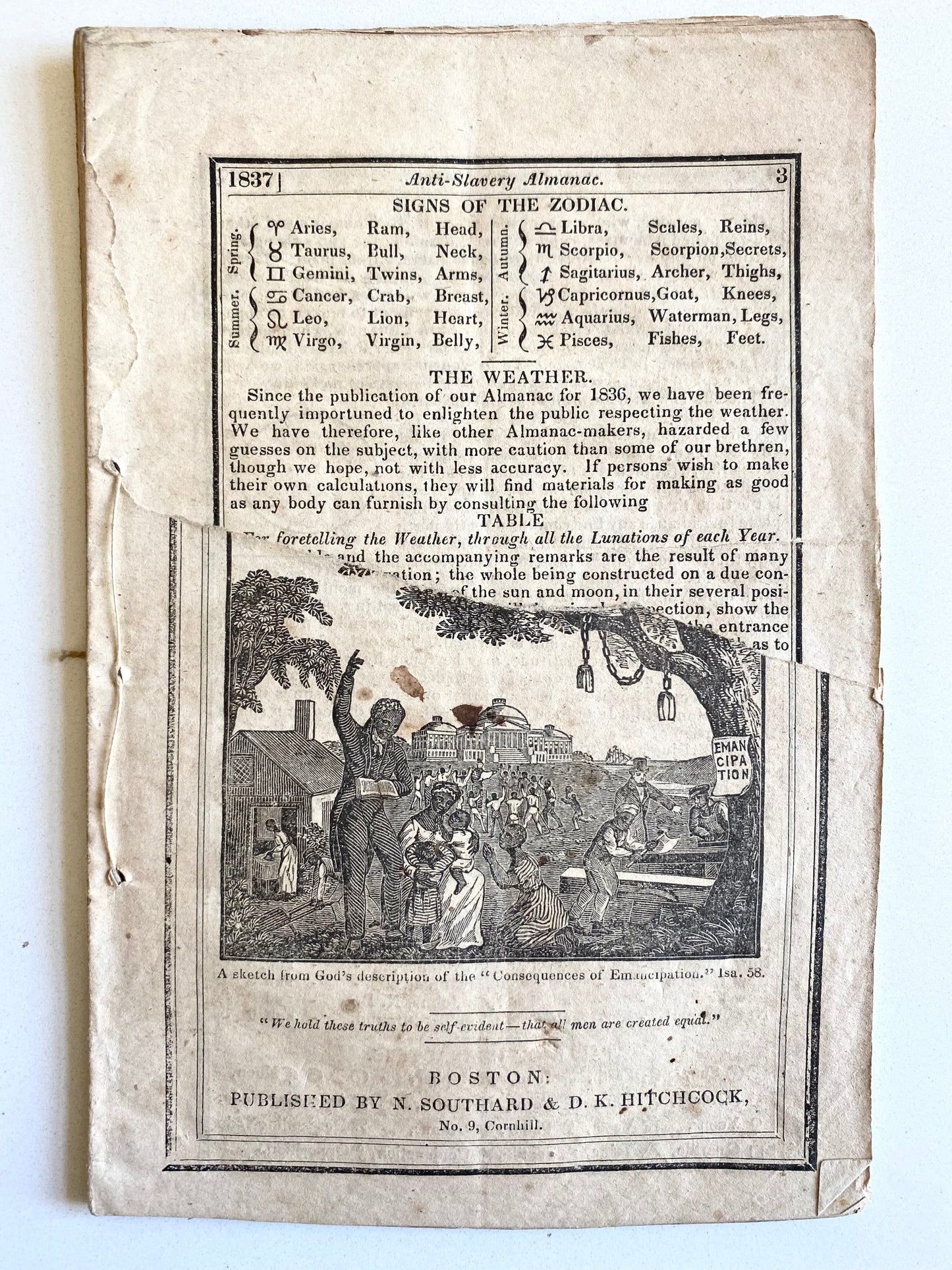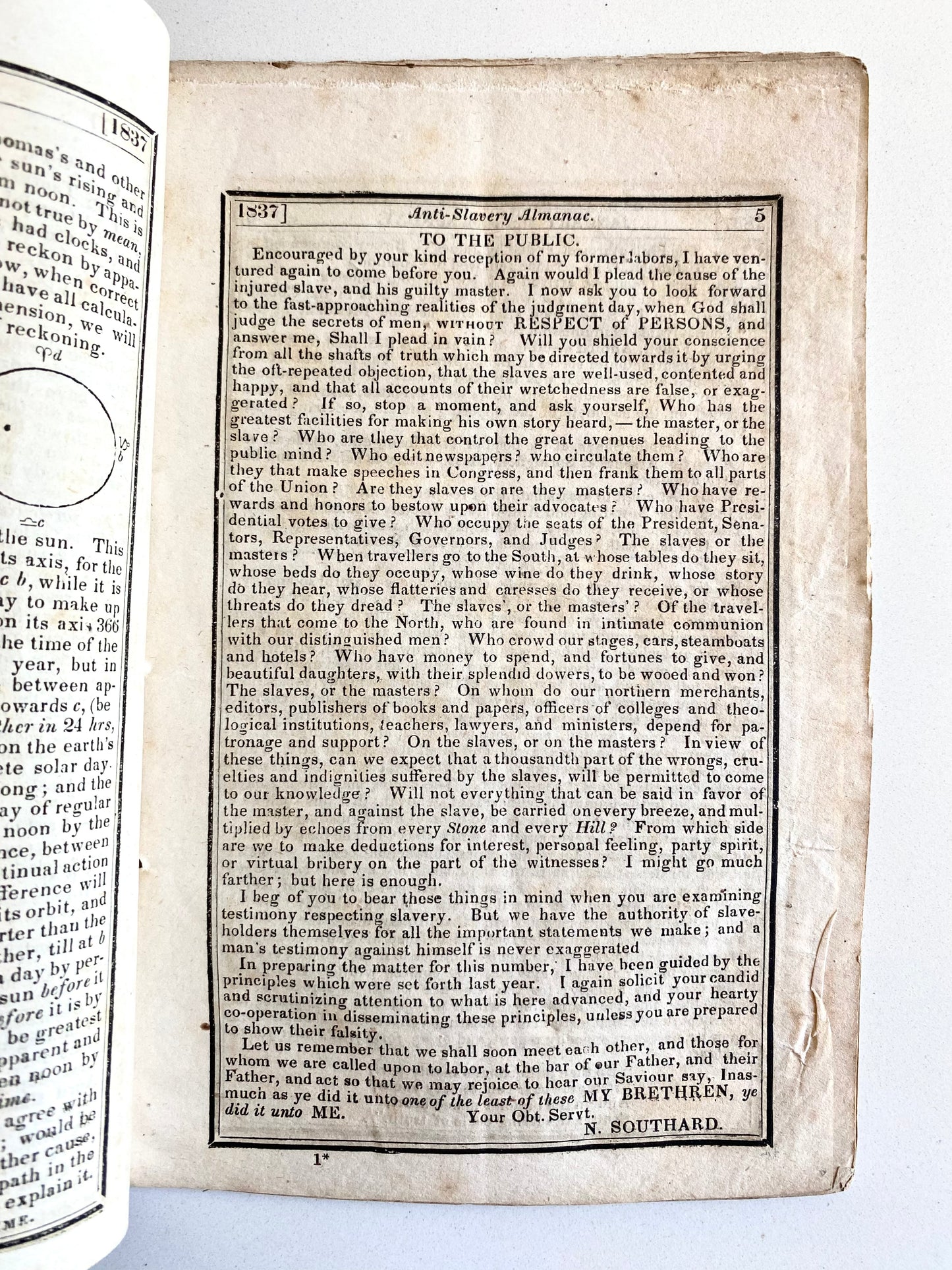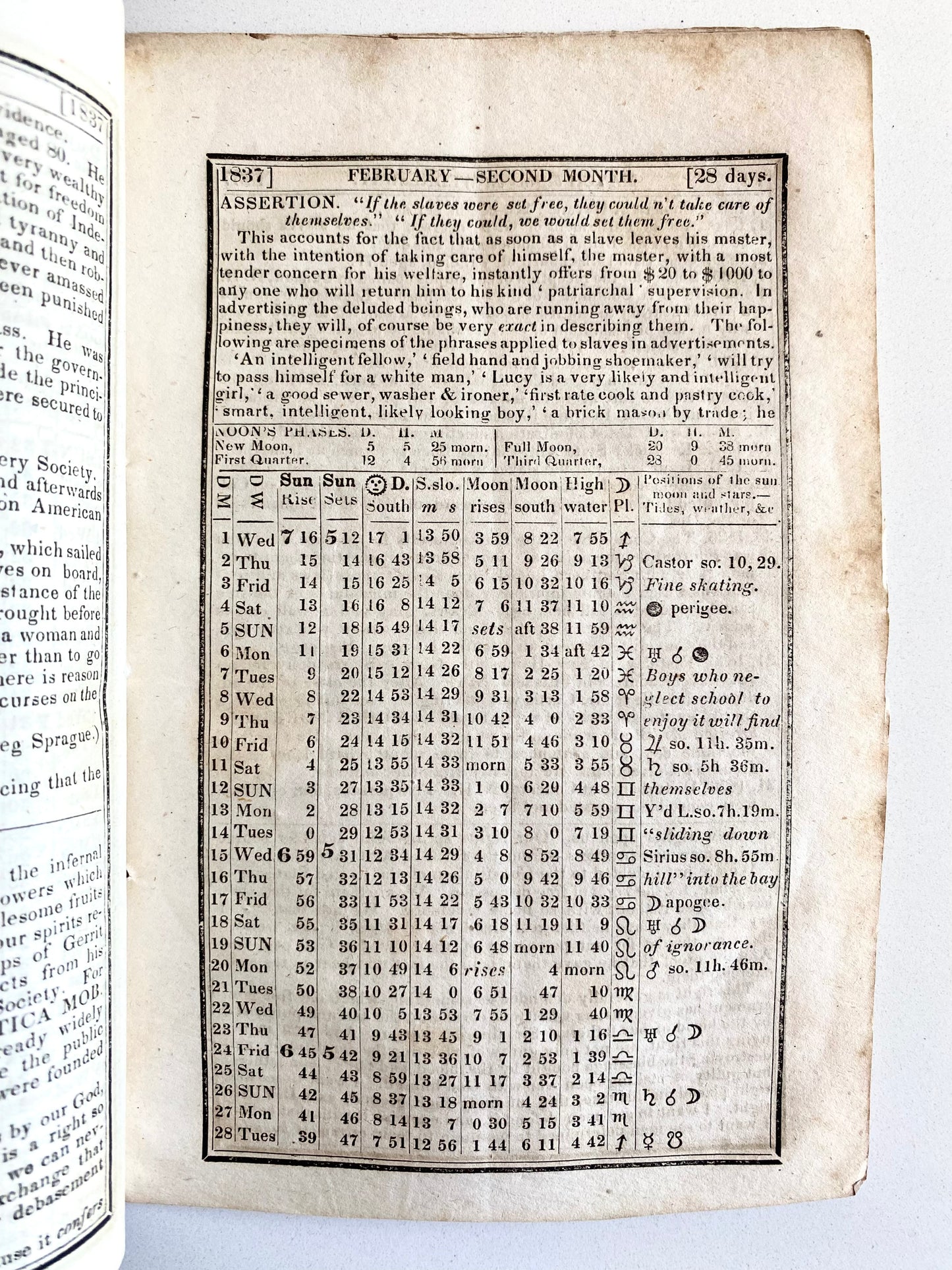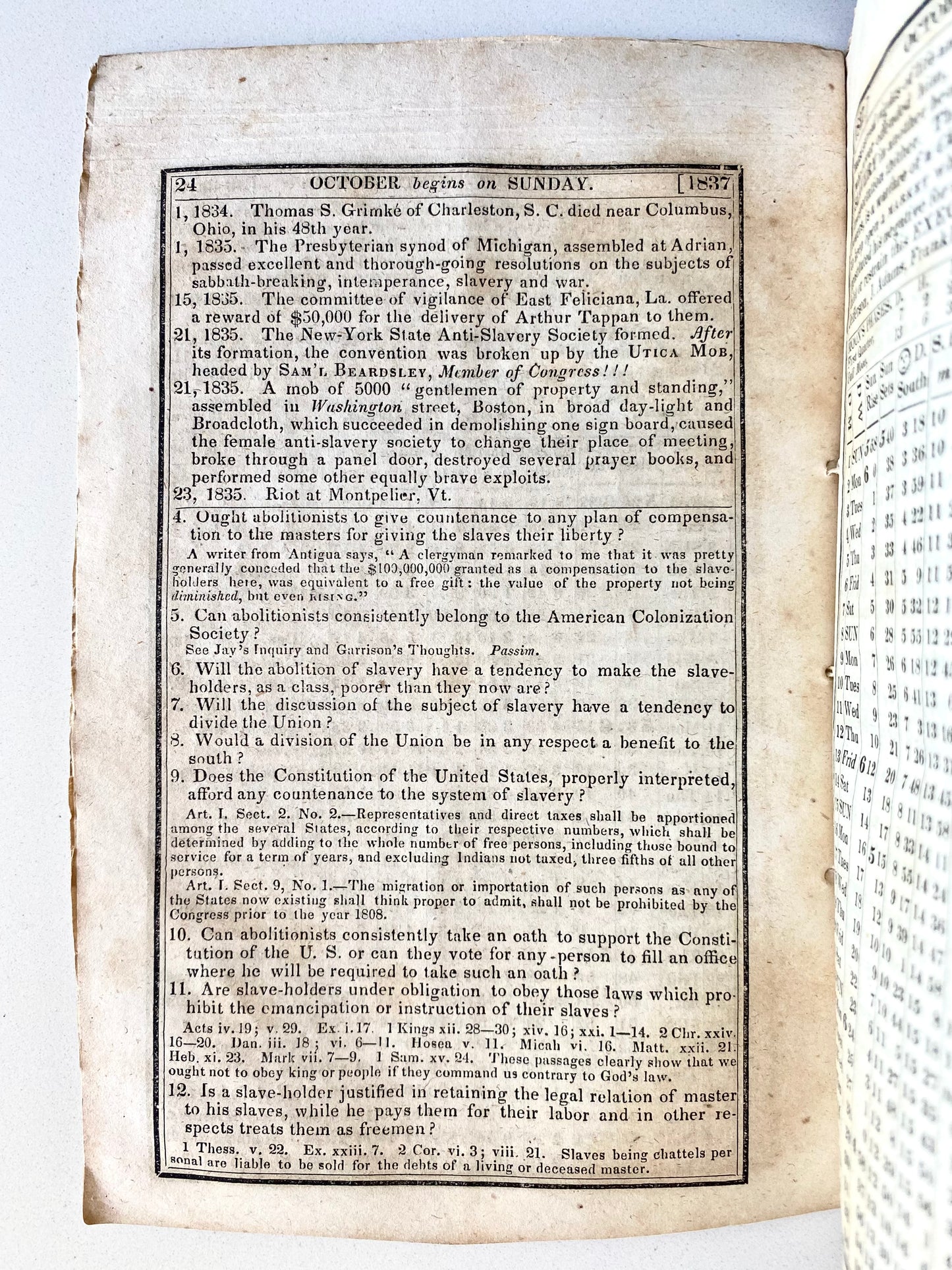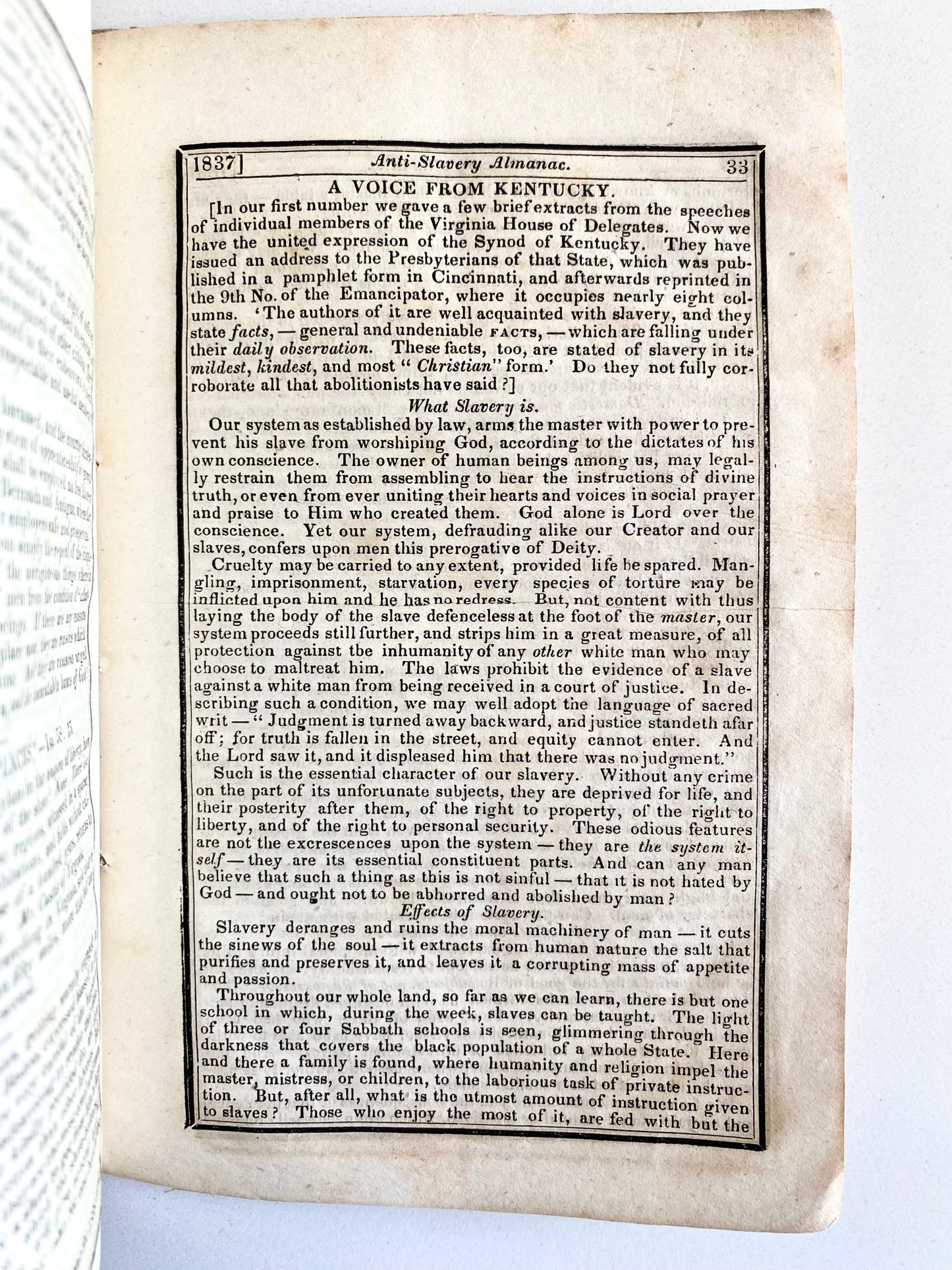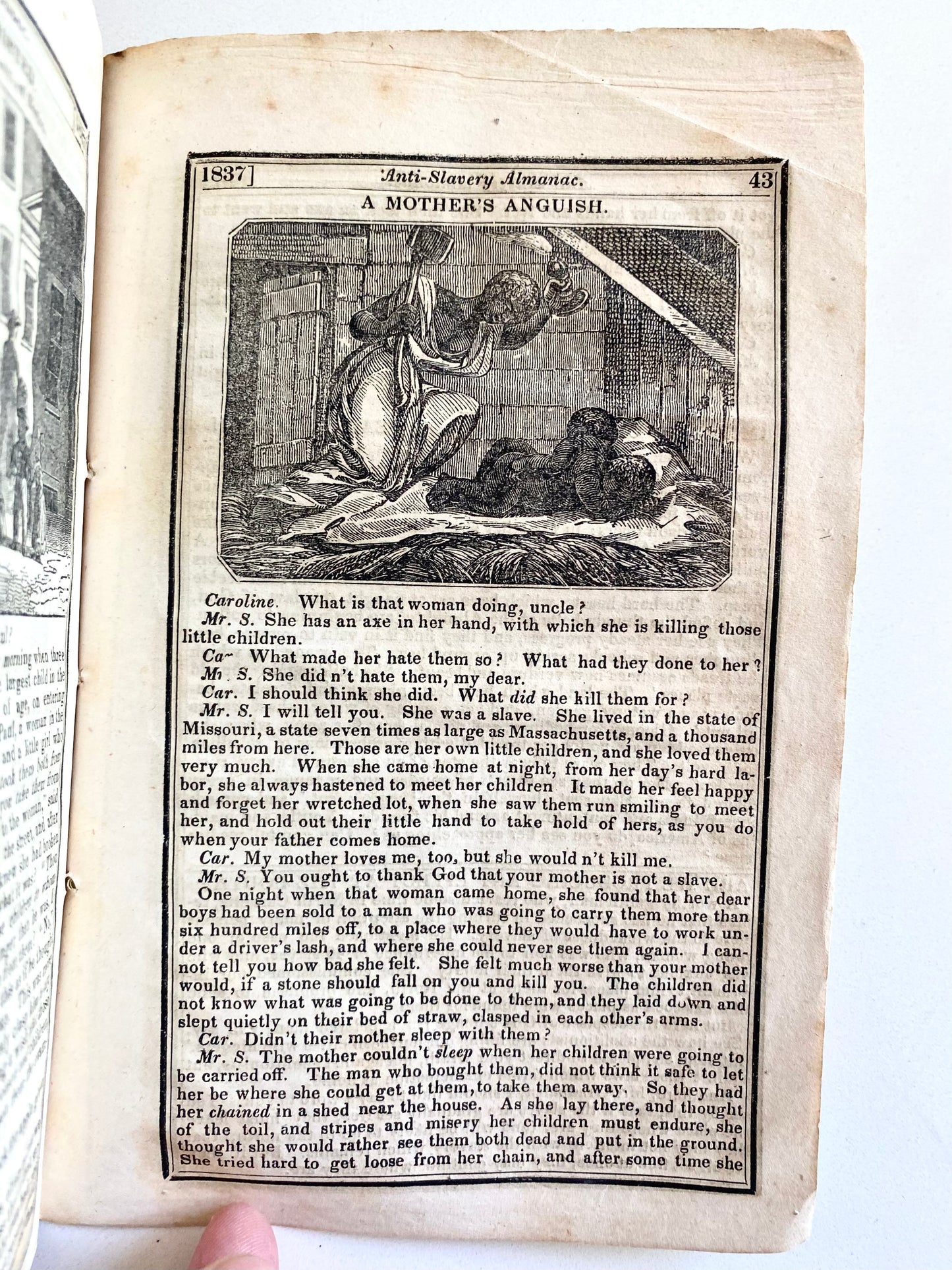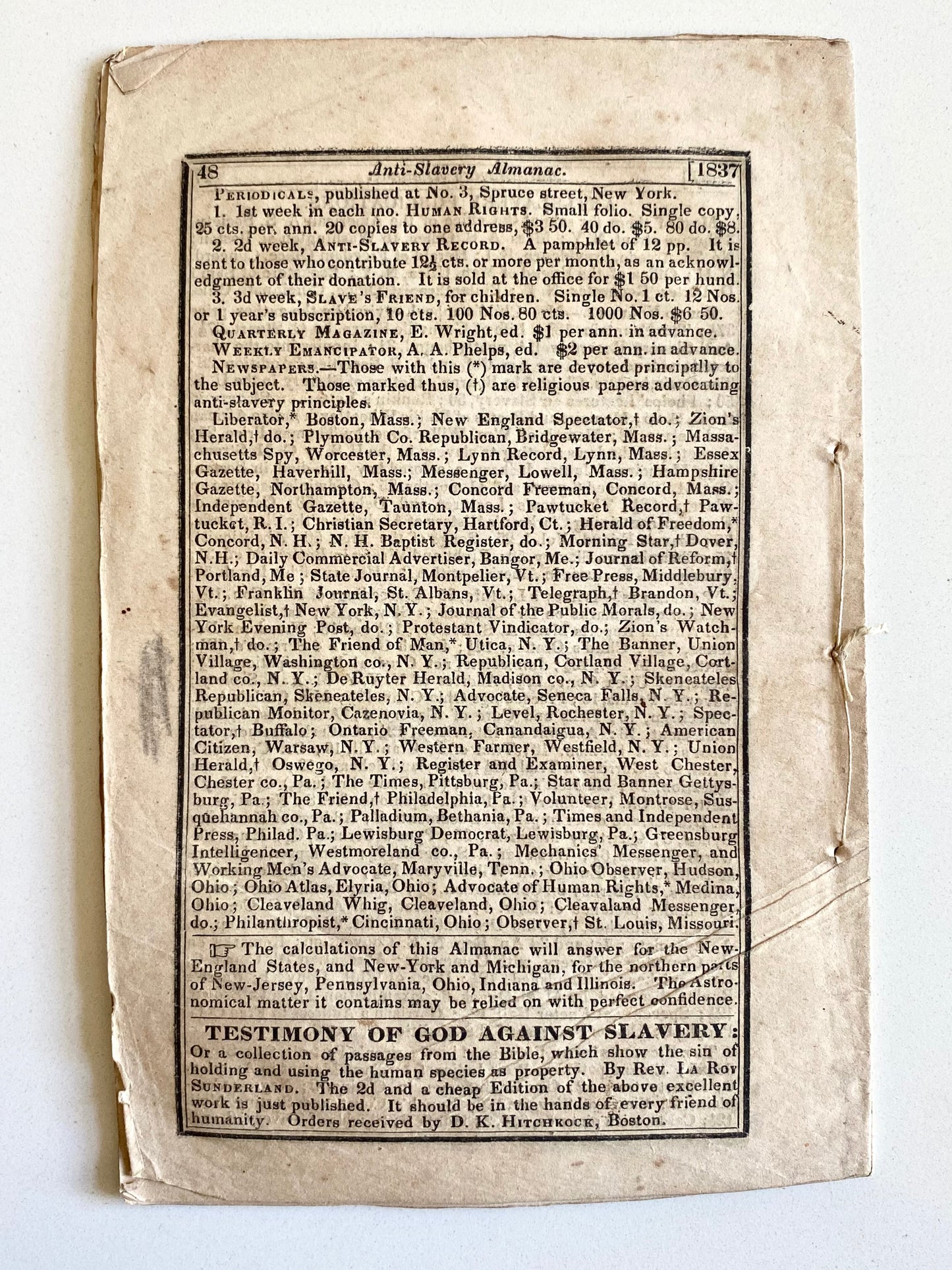Specs Fine Books
1836 ANTI-SLAVERY ALMANAC. Heartbreaking Story & Woodcut of Slave Mother Killing Her Children to Protect them from Sale.
1836 ANTI-SLAVERY ALMANAC. Heartbreaking Story & Woodcut of Slave Mother Killing Her Children to Protect them from Sale.
Couldn't load pickup availability
[Slavery & Abolition]. The American Anti-Slavery Almanac, for 1836, Being the First After Bissextile or Leap-Year, and the 61st of American Independence. Volume I. Number 2. Boston. Published by M. Southard & D. K. Hitchcock. 1837. 48pp.
A very scarce survivor of the first volume ever of the Anti-Slavery Almanac. No copies on the market at time of cataloguing and scarce in the trade.
“As with many other reform movements of the day, abolitionists used all available forms of mass communication to disseminate their message, including almanacs. Antebellum reform organizations published almanacs that included – among their charts of the stars and weather predictions – facts, stories, poems, images, and advertisements that advanced their cause. The American Anti-Slavery Almanac for 1837 is one example of an abolitionist almanac that used these tactics. In one particularly graphic engraving, an enslaved woman holds a knife over the heads of her sleeping children, about the kill them. Accompanying the engraving is a dialogue between a young girl living in Massachusetts and her uncle that explains the engraving’s gruesome subject. The child askes the older man why the woman would be so hateful as to kill her own children. The uncle explains that the woman’s life as a slave was wretched, with the one exception of being united each day with her children. On that particular night, the mother learned that her children were to be sold the next day to another farm over six hundred miles away. Heartbroken that they would be separated from her and thinking of the years of misery and toil that they would face as slaves, she chose to kill them, thinking that even death by her own hands was a better fate. When the girl asks how murder – even in those extreme circumstances – can be excused, the uncle answers that the mother has never had the opportunity to learn to read and study the Bible, and can therefore be forgiven because of her ignorance. Through this dialogue not only is the fictional young girl educated about the evils of slavery, but so are the real readers of the almanac.
Though this particular story was fictional, there were several real cases involving slave infanticide. One of the most sensational cases took place almost twenty years later, in 1856, when a fugitive slave woman named Margaret Garner from Boone County, Kentucky, finding herself surrounded by slave catchers and U.S. Marshals, tried to kill her children and herself rather than be sent back into slavery. She succeeded in killing one of her children before being stopped. “ [American Antiquarian Society]
Interestingly, the Almanac was printed with the exact same content by the Massachusetts Anti-Slavery Society, Ohio Anti-Slavery Society, etc., but with different printers noted. It is unclear whether the contents were printed and mass and shipped and separate wraps were printed for each location, or whether multiple sets of stereotype plates were produced.
Good example, though obviously lacking the top half of the first leaf. Remainders complete. Exceptionally rare.
Share
